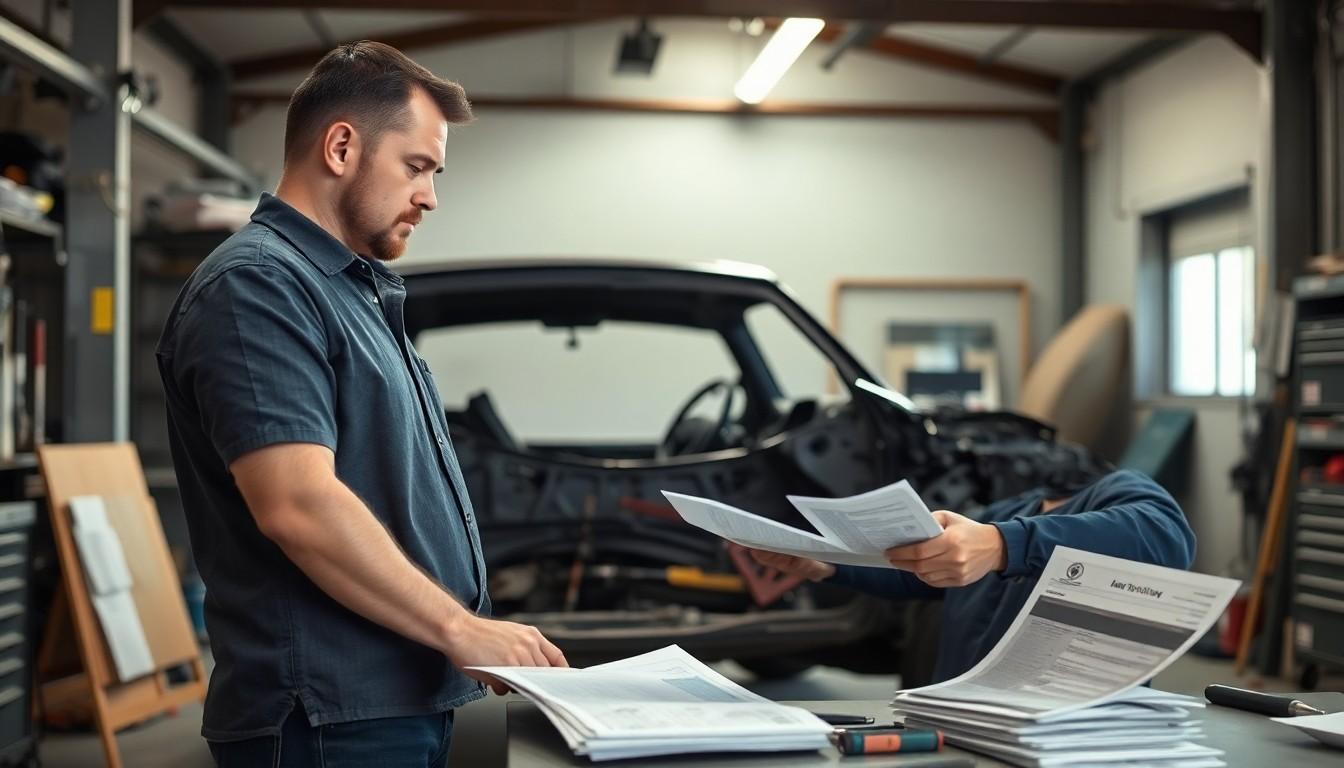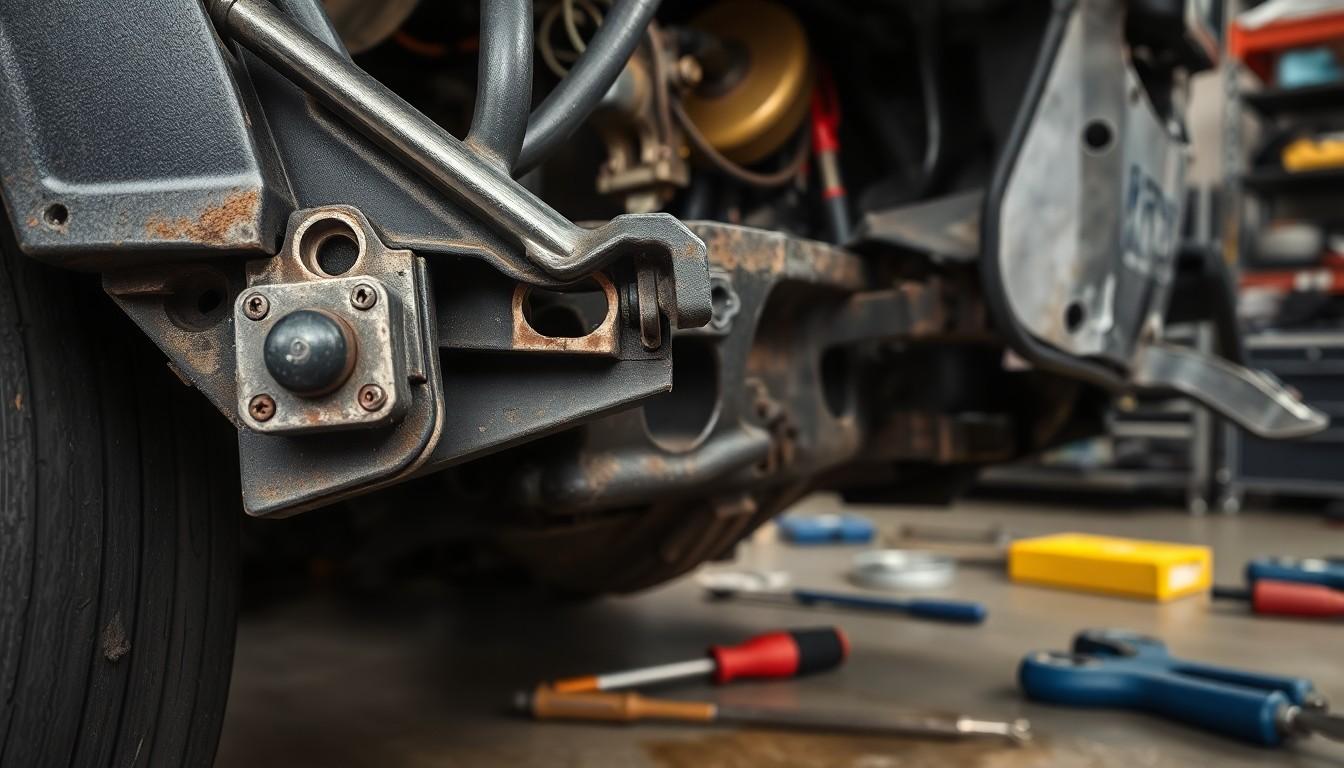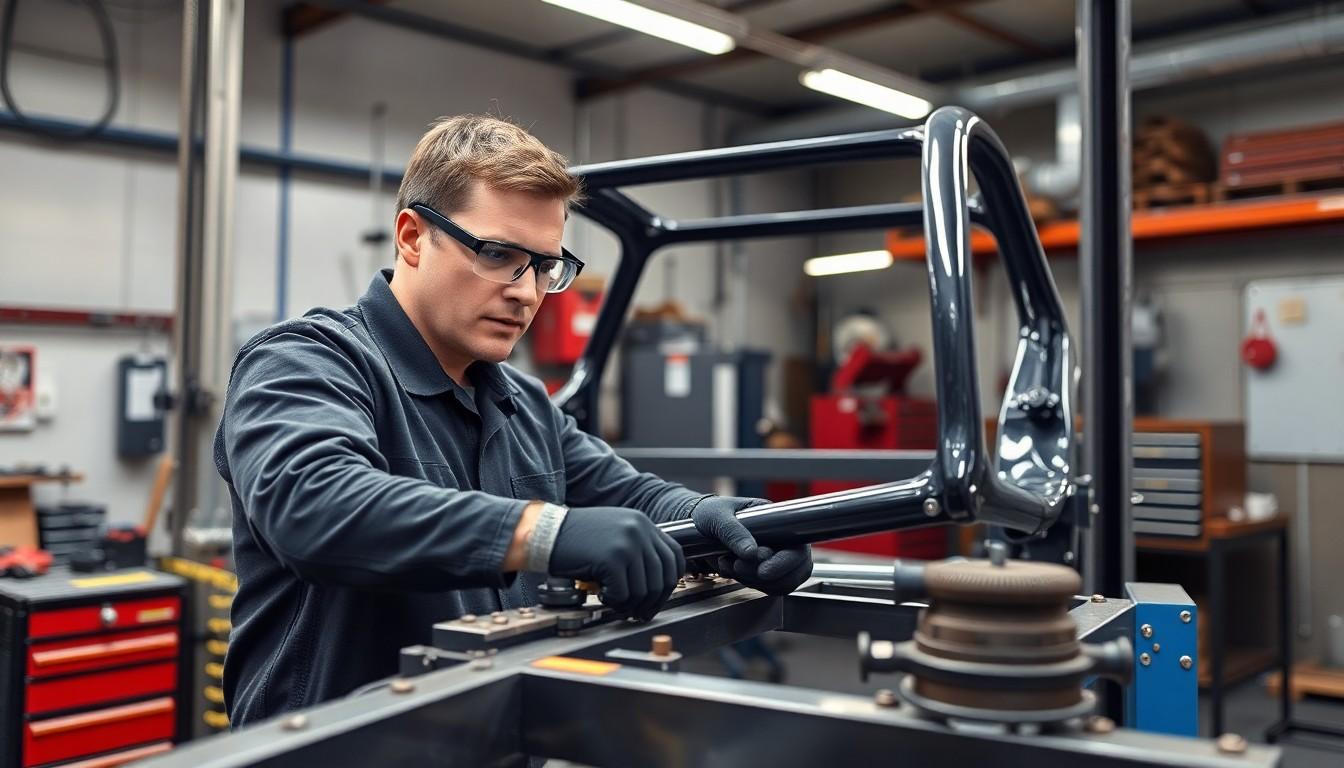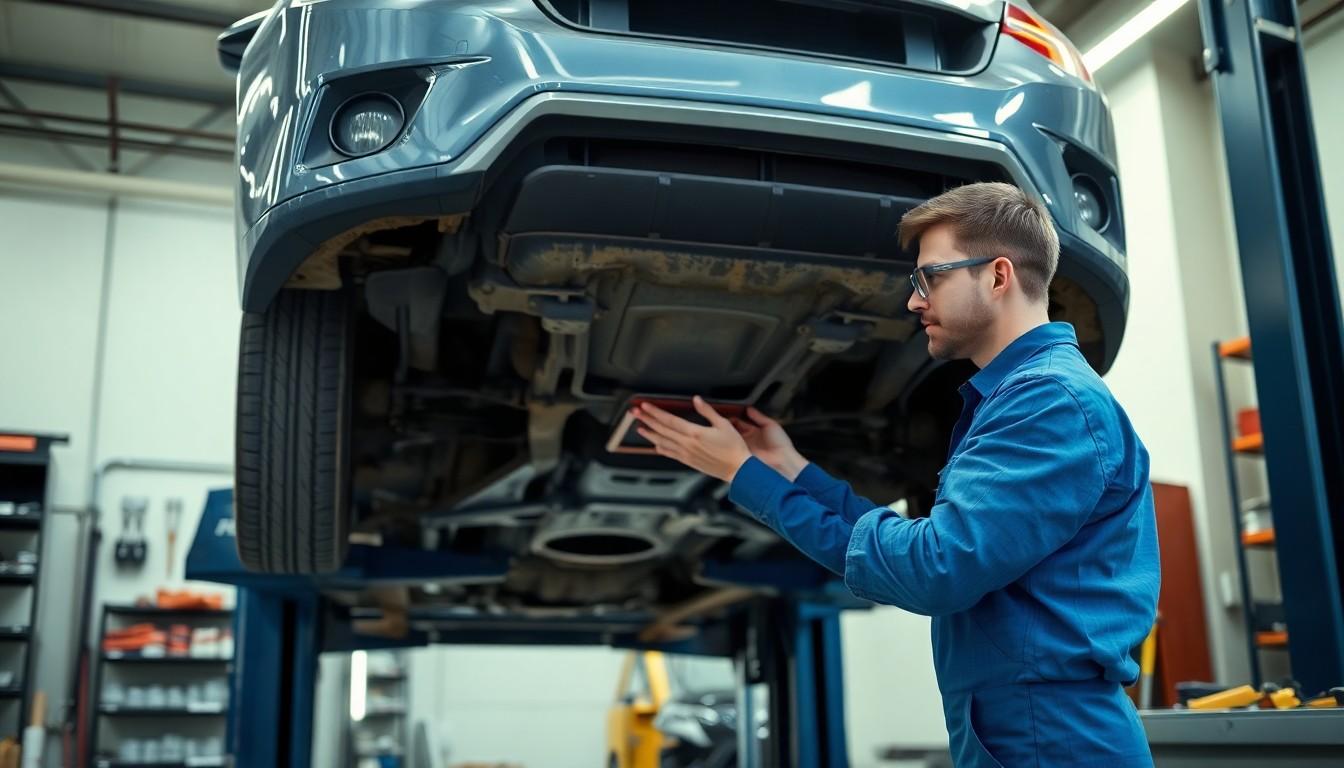When you’re shopping for a used car, seeing “frame damage reported” on a vehicle history report can stop you in your tracks. This red flag often scares potential buyers away—but should it? We’ll help you understand exactly what this term means and how it might affect your purchasing decision.
Frame damage occurs when the structural foundation of a vehicle has been compromised, typically from a serious accident or collision. While it sounds alarming, not all frame damage is created equal. Some issues can be properly repaired while others might permanently affect the car’s safety and performance. We’ve researched this topic extensively to help you navigate this potentially confusing aspect of used car buying.
What Is Frame Damage in a Vehicle?
Frame damage refers to structural harm affecting a vehicle’s foundational support system. This crucial component acts as the skeleton of your car, providing both structural integrity and protection during accidents.
Understanding the Vehicle Frame Structure
A vehicle frame consists of interconnected metal components that form the base upon which all other car parts mount. Modern cars typically feature either unibody construction (where the frame and body form one integrated unit) or body-on-frame design (where the body sits on a separate frame). The frame houses critical components like the engine, transmission, suspension, and passenger compartment. It’s engineered specifically to absorb and redirect impact energy during collisions, creating a protective “crumple zone” that shields occupants while maintaining structural integrity around the passenger cabin.
Common Types of Frame Damage
Frame damage manifests in several distinct forms, each impacting vehicle safety and performance differently. Sway damage occurs when the frame bends sideways, often causing door alignment issues and tire wear. Mash damage results from front or rear impacts that compress the frame longitudinally. Sag damage involves the middle section of the frame dropping below its normal position, frequently after improper lifting. Twisting damage happens when different parts of the frame rotate in opposite directions, severely compromising structural integrity. Kinks represent sharp, angular bends in the frame that drastically reduce its ability to absorb impact forces. Diamond damage occurs when the frame shifts into a rhomboid shape after corner impacts, leading to tracking problems and accelerated tire wear.
How Frame Damage Gets Reported

Frame damage documentation enters vehicle history through several formal channels after accidents or important impacts. Insurance companies, repair professionals, and inspection services all play crucial roles in identifying and recording structural damage to a vehicle’s frame.
Vehicle History Reports and Frame Damage
Vehicle history reports from services like Carfax or AutoCheck serve as comprehensive records of a car’s past incidents, including frame damage. These reports contain detailed documentation about accidents that resulted in structural compromise, allowing potential buyers to make informed decisions. The presence of frame damage on these reports typically reduces a vehicle’s market value by 10-20% compared to similar undamaged models. Reviewing these reports has become an essential step in the used car buying process since they reveal information about past repairs that might not be visible during a standard inspection.
Insurance Claims Process
Insurance adjusters evaluate frame damage through comprehensive assessments that determine whether repairs are feasible or if the vehicle should be declared a total loss. Their evaluation process involves comparing repair costs against the vehicle’s current market value—when repair expenses exceed 70-80% of the car’s worth, insurance companies generally declare it totaled. The assessment includes detailed examination of structural components, measurement of frame misalignments, and evaluation of how these issues might affect long-term safety and performance. Insurance documentation from these assessments often becomes part of the permanent vehicle history, following the car throughout its remaining service life regardless of whether repairs were completed.
Signs That Indicate Possible Frame Damage

Frame damage isn’t always immediately obvious, but several telltale signs can alert you to potential structural issues in a vehicle. Recognizing these indicators early can help prevent further damage and ensure your safety on the road.
Visual Indicators of Frame Damage
Visual inspections often reveal clear signs of frame damage without specialized equipment. Obvious dents, bends, and creases in the frame structure serve as immediate red flags for structural compromise. Uneven gaps between body panels, doors, or the trunk lid typically indicate the frame has shifted from its original position. An off-kilter appearance where one side or corner droops more than others strongly suggests underlying frame damage affecting the vehicle’s structural balance.
Performance Issues Related to Frame Damage
Performance problems frequently accompany frame damage and become more noticeable over time. Uneven tire wear patterns emerge when frame misalignment causes improper weight distribution across the vehicle’s suspension system. Steering that consistently pulls to one side even though professional alignment adjustments often points to frame distortion affecting the vehicle’s tracking. Suspension irregularities caused by frame damage result in compromised handling, especially during turns or when handling uneven terrain. New rattles and squeaks, particularly those that appeared after a collision, commonly signal loosened frame components or stress points where the structure has been compromised.
Implications of Buying a Car with Reported Frame Damage

Purchasing a vehicle with reported frame damage comes with several important considerations that extend beyond the initial price tag. These implications affect safety, value, and long-term ownership experience in ways that every buyer should understand before making a decision.
Impact on Vehicle Safety
Frame damage significantly compromises a vehicle’s structural integrity, creating serious safety concerns for drivers and passengers. The weakened chassis affects crucial components like body panels, fenders, roof structures, and wheel welds, potentially undermining the car’s ability to protect occupants during collisions. Signs of frame-related safety issues include unusual tire wear patterns, tracking problems where rear wheels don’t properly follow the front wheels, and steering that consistently pulls to one side. Many damaged vehicles also exhibit poorly fitting panels and make strange noises during normal operation, indicating structural misalignment that compounds over time. A thorough inspection by a qualified collision repair technician is essential to determine if these safety issues can be adequately addressed.
Effect on Resale Value
Frame damage creates a permanent reduction in a vehicle’s market value, often decreasing worth by substantial margins compared to similar undamaged models. The notation on a vehicle history report acts as a red flag for future buyers, limiting the pool of interested purchasers and driving down potential offers. Insurance companies frequently view these vehicles with heightened scrutiny, potentially leading to higher insurance premiums or reduced coverage options. In extreme cases, extensive frame damage can result in insurers declaring the vehicle a total loss, significantly complicating future sales transactions. The expense of proper repairs often exceeds what can be recouped through increased resale value, creating a financial equation that rarely favors the buyer of a frame-damaged vehicle.
Can Frame Damage Be Properly Repaired?

Frame damage can often be repaired, though the feasibility depends entirely on the severity and location of the damage. Minor frame damage typically responds well to professional repair techniques, while extensive structural compromise may render a vehicle beyond economical repair.
Frame damage repair possibilities vary based on several factors:
- Minor bends or isolated damage areas can be successfully corrected by qualified collision repair technicians who specialize in structural restoration
- Repair decisions should always follow comprehensive inspections that accurately assess the full extent of frame damage
- Important structural compromise might not be economically viable to repair, especially when costs exceed 70-80% of the vehicle’s value
- Insurance companies frequently declare heavily damaged vehicles a total loss rather than approving expensive frame repairs
- Proper restoration must return the frame to its precise pre-collision specifications to maintain safety standards and prevent future mechanical issues
Modern Frame Repair Techniques
Modern frame repair employs sophisticated technology and precision methods to restore structural integrity. Certified technicians use specialized equipment like frame machines with hydraulic pressure systems that apply controlled force to straighten bent components. Computer measuring systems now enable technicians to compare damaged frames against manufacturer specifications with millimeter accuracy.
Advanced welding techniques allow for sectional replacement of damaged frame portions rather than complete frame replacement. Heat treatment methods help restore metal strength in areas that have been stressed or bent during collision. Technicians follow manufacturer-exact repair procedures that maintain the vehicle’s engineered crush zones and safety systems.
When Frame Damage Is Beyond Repair
Frame damage crosses into unrepairable territory under several exact circumstances. Severe structural compromise that affects multiple critical load-bearing points typically makes repairs impractical from both safety and economic perspectives. Insurance adjusters often declare vehicles a total loss when frame repair estimates exceed 70-80% of the vehicle’s actual cash value.
Safety considerations become paramount when evaluating repair feasibility. Frames with important rust deterioration combined with collision damage present compound problems that compromise structural integrity beyond reasonable restoration. Vehicles with damage to engineered crumple zones and safety structures may never regain their original crash protection capabilities even after extensive repairs.
Economic factors eventually determine many repair decisions. Labor-intensive frame straightening requires specialized equipment and highly trained technicians, driving repair costs upward quickly. The diminished resale value of a properly repaired but previously frame-damaged vehicle often doesn’t justify the substantial investment required for comprehensive structural restoration.
How to Verify Frame Damage Reports

Confirming the accuracy of frame damage reports requires thorough investigation beyond what’s simply stated on paper. Professional evaluations and comprehensive vehicle history checks provide the necessary context to understand the extent and implications of any structural damage.
Getting a Professional Inspection
Professional inspections represent the most reliable method to verify reported frame damage. Qualified collision repair technicians possess specialized equipment and expertise to comprehensively assess the vehicle’s structural integrity. These experts examine the frame for bends, cracks, or misalignments that might compromise safety or performance. During the inspection, technicians evaluate whether the damage can be repaired effectively or if the vehicle’s structural compromise is too severe. The inspection process typically involves measuring frame dimensions against factory specifications to determine the exact nature and extent of any deviations. A detailed assessment from a certified professional provides clarity about repair feasibility and helps establish whether the vehicle remains roadworthy even though past damage.
Using Vehicle History Services Effectively
Vehicle history reports from services like Carfax and AutoCheck offer valuable insights into a car’s structural damage history. These reports compile data from multiple sources including insurance claims, repair facilities, and title registrations to create a comprehensive picture of past incidents. When reviewing these reports, pay attention to exact details about the frame damage incident, including the date, severity, and whether proper repairs were completed. Cross-reference information across multiple vehicle history services to ensure nothing is overlooked, as different databases may contain varying records. Look for documentation of professional repairs following the damage report, which indicates that proper remediation steps were taken. Also, these services often include information about any salvage or rebuilt titles associated with the vehicle – important indicators of severe structural compromise. The investment in comprehensive vehicle history reports pays dividends by providing crucial context for understanding the true condition of a potentially damaged vehicle.
Conclusion
Frame damage reports significantly impact a vehicle’s safety profile and market value. While not all frame damage is equal some is repairable while other damage compromises the vehicle beyond safe restoration.
When considering a car with reported frame damage we strongly recommend getting a professional inspection to understand the true extent of the damage. The 10-20% reduction in value might seem attractive but you’ll need to weigh this against potential safety concerns and future resale difficulties.
Remember that thorough research using reliable vehicle history services and expert assessments is your best defense against making a costly mistake. A complete understanding of what that frame damage report really means will help you make an well-informed choice that balances your budget with your safety needs.
Frequently Asked Questions
What does “frame damage reported” mean on a vehicle history report?
“Frame damage reported” indicates that a vehicle’s structural foundation has been compromised, typically from a significant accident. This structural damage affects the vehicle’s core support system that maintains its integrity and protects occupants during collisions. The severity can range from minor to severe, potentially affecting the vehicle’s safety, performance, and value.
How does frame damage affect a car’s value?
Frame damage typically reduces a vehicle’s market value by 10-20% compared to similar undamaged models. This permanent devaluation occurs because structural damage raises concerns about long-term reliability and safety. Even properly repaired vehicles carry this stigma, limiting the pool of potential buyers and complicating future resale efforts.
Can a car with frame damage be safely repaired?
Yes, but it depends on the severity. Minor frame damage can often be effectively repaired by qualified technicians using specialized equipment and advanced welding methods. However, extensive damage to critical load-bearing points may compromise the vehicle’s structural integrity beyond safe repair. Always have repairs performed by certified professionals specializing in structural restoration.
What are common signs that a vehicle has frame damage?
Look for visual indicators like obvious dents in structural components, uneven gaps between body panels, and misaligned doors or windows. Performance issues often accompany frame damage, including uneven tire wear, steering that pulls to one side, unusual handling characteristics, and strange noises when driving over bumps.
Should I buy a car with reported frame damage?
It depends on several factors. Consider the severity of damage, quality of repairs, significant price discount, and your long-term plans for the vehicle. Have the car thoroughly inspected by a qualified technician before purchase. Remember that you’ll face challenges with insurance coverage, future resale, and potential safety concerns that must be weighed against any upfront savings.
How do insurance companies handle frame damage claims?
Insurance adjusters evaluate frame damage to determine if repairs are economically feasible or if the vehicle should be declared a total loss. Generally, if repair costs exceed 70-80% of the vehicle’s market value, insurers will declare it totaled. The assessment includes detailed examination of structural components and how issues might affect long-term safety and performance.
How reliable are frame damage reports on vehicle history services?
Vehicle history reports like Carfax and AutoCheck are valuable starting points but not infallible. They compile data from various sources including insurance claims, repair facilities, and inspection services. However, some damage may go unreported or be incorrectly documented. Always supplement these reports with a professional inspection before purchasing a vehicle with reported frame damage.
Can frame damage affect a car’s insurance coverage?
Yes. Vehicles with reported frame damage often face higher insurance premiums or limited coverage options. Some insurers may refuse comprehensive coverage or charge significantly more due to perceived increased risk. Additionally, if you’re in an accident with a previously frame-damaged vehicle, the insurer might attribute pre-existing structural issues to your claim, potentially complicating your compensation.

